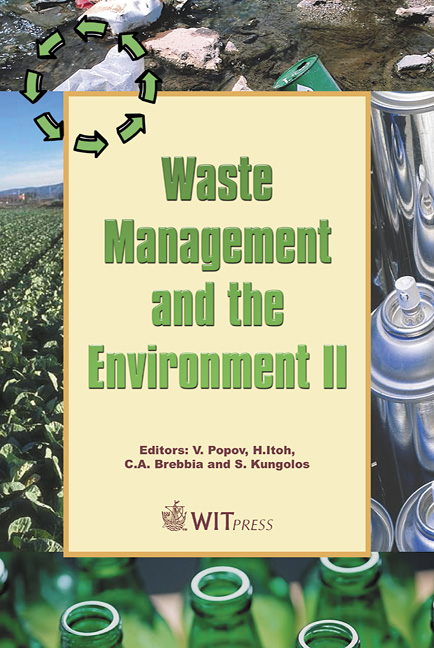Production Of Artificial Aggregates From Ceramic Processing Of Municipal Incinerator Fly Ash
Price
Free (open access)
Transaction
Volume
78
Pages
10
Published
2004
Size
500 kb
Paper DOI
10.2495/WM040051
Copyright
WIT Press
Author(s)
G. De Casa, T. Mangialardi & L. Piga
Abstract
Municipal Solid Waste (MSW) incinerator fly ash was processed to form new ceramic materials using conventional ceramic processing technology (dry milling, powder compaction and sintering). A preliminary washing step of raw fly ash with water was used to improve the chemical composition of this material. The effects of particle size distribution, powder compaction pressure, and sintering temperature and time on the physical and mechanical properties and leaching behaviour of sintered products were investigated. It was found that a washing step followed by a milling step is able to transform raw fly ash into a material with consistent chemical and physical characteristics for its thermal processing. With such a pretreatment it is possible to reduce the power input of the sintering process (temperature reduction from 1210 to 1140°C) and to manufacture sintered products that are characterised by high density (2.65-2.80 g/cm 3 ), high compressive strength (260-450 N/mm 2 ), very low water absorption capacity (0.1-0.2%), and reduced heavy metals leachability. Such materials are able to meet the requirements for normal-weight aggregates for use in concrete. Keywords: incinerator fly ash, washing step, ceramic processing, sintering, waste reuse, artificial aggregates, heavy metals, leaching behaviour. 1 Introduction Although landfill remains the primary disposal method for Municipal Solid Waste (MSW), poor availability of new landfill sites combined with increasing MSW production and landfilling costs, and potential long-term adverse environmental effects of landfilling have hastened efforts in many industrialised countries to adopt incineration as a viable alternative for MSW management.
Keywords
incinerator fly ash, washing step, ceramic processing, sintering, waste reuse, artificial aggregates, heavy metals, leaching behaviour.





